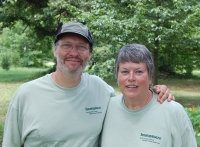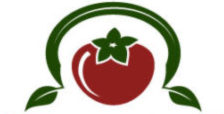Our Project's Story
In the Beginning
The Dwarf Tomato Project grew out of a comment made in a Tomato Forum at Gardenweb when Craig LeHoullier lamented the fact that the dwarf category in tomatoes was very restricted. He suggested it would be good to cross dwarfs with heirlooms to remedy this situation and mentioned New Big Dwarf being listed in a 1915 Isbell Seed Catalogue which noted how the variety was developed by crossing Dwarf Champion (known since the late 1800s) with the largest known tomato at that time, Ponderosa. Patrina thought this sounded like a fun thing to do and decided to have a go at crossing some dwarfs with heirlooms in her next summer season in Australia.
By the end of 2005 Patrina had successfully made 8 crosses and she and Craig decided to use this material to start a project where anyone (who wanted to help grow the many generations that would be needed to stabilise new varieties) could volunteer to grow some plants. The goal was to create a selection of tastes, colours and sizes that would equal heirloom varieties with plants having an advantage of being more compact and therefore more manageable. Volunteers were given the opportunity to name any new novel dwarf tomato type they discovered in appreciation for helping in the project.
In January 2006 the project was given a dedicated section in a new tomato forum by the site owner of Tomatoville which became a home for the project. Forum members signed up each season to help grow the many generations of each 'family' which is how we identified each cross using names taken from 'Snow White and the Seven Dwarfs' and inventing new names as needed. These were working names used for reporting results each season in the forum until the best tasting and performing varieties were selected and given names by the volunteers who discovered them.
Each year further breeding added more 'families' as other people started having a go at cross pollinating heirlooms with dwarfs, or dwarfs with dwarfs. By 2019 the project had released over 100 new dwarf varieties of various tomato colours, sizes and shapes, and after discovering the Open Source Seed Initiative (OSSI), and with agreement of project participants, ALL varieties were designated as OSSI varieties. This means that seeds are sold or shared with the following pledge:
The OSSI pledge - You have the freedom to use these OSSI- Pledged seeds in any way you choose. In return, you pledge not to restrict others’ use of these seeds or their derivatives by patents or other means, and to include this Pledge with any transfer of these seeds or their derivatives.
Forum members who have also contributed their crosses since 2006 are Bruce Bradshaw, Vince Lavello, Ray South, Lee Newman, Sherry Long, Soren Linnemann, and more recently Craig LeHoullier, so the dwarf category in tomatoes is expanding and will possibly grow exponentially going forward. At around half the size of regular tomato plants, the need is greater now than ever before with many people wanting to grow their own food yet often having limited space to do so. If you want the size, colour, taste and texture of heirloom tomatoes on plants that are half their size, grow some varieties from the Dwarf Tomato Project!
Project Leaders:
Craig LeHoullier, North Carolina, USA
Patrina Nuske-Small, New South Wales, Australia

Craig is the author of Epic Tomatoes and Growing Vegetables in Straw Bales. His website lists many more details about the history of the Dwarf Tomato Project and its varieties, and also includes his Blog with loads of interesting snippets and updates about his recent dwarf breeding results. You may be able to attend one of Craig's speaking or workshop events - keep an eye on his schedule here.
